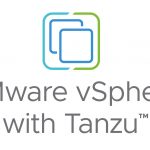We’ve been running a new session at VMworld 2011 called Group Discussions. These are round table discussions about best practices, and is an opportunity for customers to bounce questions between each other as well as ask advice from the VMware folks in attendance. I’ve been moderating the #GD21 session, and was interested to see the question about Guest OS Partition Alignment come up in both sessions.
An unaligned partition results in the I/O crossing a track boundary and causes an additional I/O. This incurs a penalty on latency and throughput. The additional I/O (especially if small) can impact system resources significantly on some host types. An aligned partition ensures that the single I/O is serviced by a single device, eliminating the additional I/O and resulting in overall performance improvement.
Before Alignment:
After Alignment:
I should point out that this issue doesn’t affect many of the newer Guest OS, which are automatically aligned. Operating Systems which I understand to be partition aligned, and thus unaffected by this issue, are Windows 7, Windows Vista & Windows 2008. There maybe others – if you know of additional ones, please leave a comment.
Many of our storage partners have published best practices around what to do with their particular storage array for partition alignment. A list of papers that I am aware of are here. Again, if you know of others, feel free to leave a comment.
EMC:
http://www.emc.com/collateral/hardware/technical-documentation/h2370-microsoft-sql-svr-2005-ns-series-iscsi-bp-plan-gde-ldv.pdf
http://www.emc.com/collateral/hardware/solution-overview/h2529-vmware-esx-svr-w-symmetrix-wp-ldv.pdf
HP:
http://h71019.www7.hp.com/ActiveAnswers/downloads/Exchange2003EVA5000PerformanceWhitePaper.doc
IBM:
http://www.redbooks.ibm.com/redbooks/pdfs/sg247521.pdf
http://www.redbooks.ibm.com/redbooks/pdfs/sg247146.pdf
Microsoft:
http://support.microsoft.com/kb/929491
NetApp:
http://media.netapp.com/documents/tr-3747.pdf
Get notification of these blogs postings and more VMware Storage information by following me on Twitter: VMwareStorage













